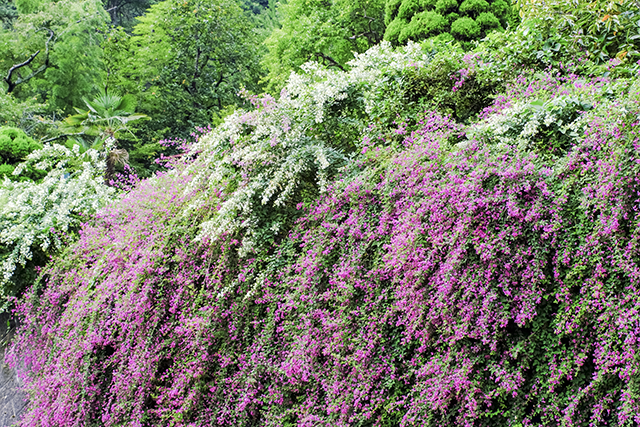
To obtain methanolic extract, Dr. Ullah used 300 grams of roots and aerial parts (or the parts of the plant above soil). From this Dr. Ullah acquired shrubby bushclover root methanolic extract and shrubby bushclover aerial parts methanolic extract. Both methanolic extracts were subjected to preliminary phytochemical screening in order to determine the types of constituents present in them. Dr. Ullah was able to uncover phenols, tannins, flavonoids, alkaloids and saponins, the concentrations of which he gauged through various tests.
Dr. Ullah moved on to testing the different qualities of the methanolic extracts. Assaying the antibacterial and antifungal activities was conducted via the agar well diffusion method and agar tube dilution method, respectively. The radical scavenging capabilities were evaluated through the 2,2-diphenyl-1-picrylhydrazyl (DPPH) radical scavenging system and hydrogen peroxide scavenging assays. The cytotoxicity assay was done with human lung carcinoma (LU-1) and human prostate carcinoma (LnCaP) cell lines.
The tests yielded surprising and promising results. Both of the methanolic extracts demonstrated notable antifungal and antimicrobial activity, with the aerial parts methanolic extract being especially effective. It was found to be potent against Aspergillus niger, Fusarium solani, and Mucor mucedo. In fact, the aerial parts methanolic extract was noted as being more effective than the common antifungal medication Terbinafine.
Their radical scavenging abilities turned out to be just as noteworthy. At 200 micrograms per milliliters (μg/mL), the DPPH radical scavenging activities of the shrubby bushclover aerial parts methanolic extract came to almost 60 percent. The same amount of shrubby bushclover root methanolic extract was more potent at 80 percent. When it came to the hydrogen peroxide scavenging assays, the extracts' scavenging activities were both above 60 percent at 200 μg/mL concentrations. At these amounts, the reducing power abilities of the extracts was upwards of 0.8 reducing power (OD).
"The decrease in absorbance of DPPH radical is caused by antioxidant through the reaction between antioxidant molecule and radical results in the scavenging of the radical by hydrogen donation," wrote Dr. Ullah. "With regards to reducing power, higher reducing activities can be attributed to higher amounts of polyphenolics and the reducing capacity of a compound may reflect its antioxidant potential." (Related: Red beets and beet juice top the list of healing antioxidants due to polyphenol and betalain concentration.)
As for the cytotoxicity results, these were highly promising, too. "Interestingly, [shrubby bushclover] possessed the highest inhibition potential against LU-1 and LnCaP cell lines indicating its ultimate potential for biopharmaceutical uses," said Dr. Ullah.
Based on these results, Dr. Ullah wrote in the conclusion that "the high antimicrobial, antioxidant, and cytotoxic potential of [shrubby bushclover] highlights the need of further investigations to isolate the active principle and their subsequent evaluation."
He added that his findings were indicative of how further studies would be necessary. The exact compounds behind these actions have yet to be fully identified. Dr. Ullah did mention that at the time the study was published, more investigations were being carried out with the methanolic extracts. As of writing, the status of these analyses remains unknown.
Fast facts on shrubby bushclover
- The shrubby bushclover is also known as the “two-colored bush-clover.”
- It was first introduced in the U.S. in 1856.
- This plant produces two varieties of flowers – closed or cleistogamous flowers that self-pollinate, and open or chasmogamous flowers that need pollinators.
Interested in learning more about other herbal medicines like the shrubby bushclover? Head over to NaturalCures.news today.
Sources include:
Please contact us for more information.























